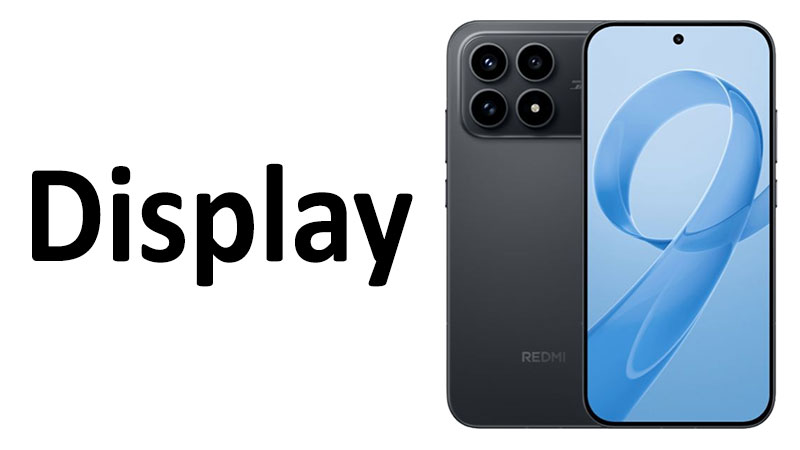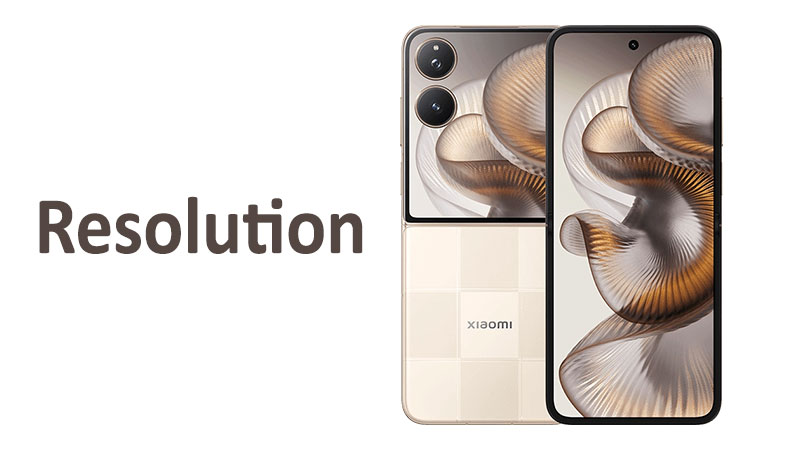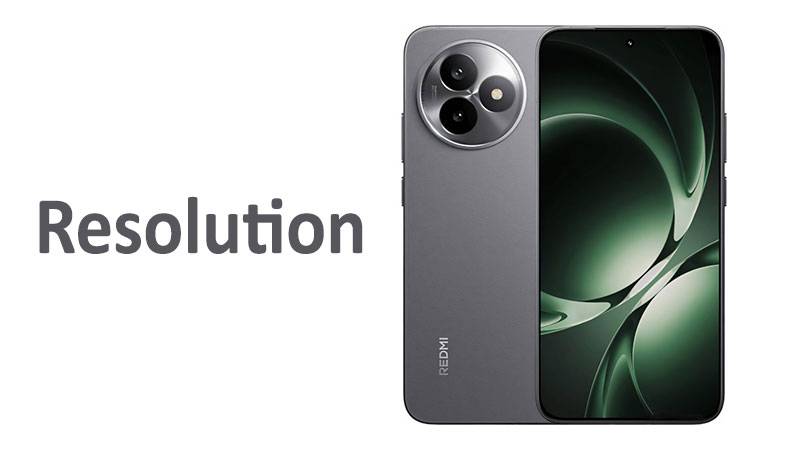The Xiaomi Redmi K90 display immediately captures attention as a new benchmark in mobile screen technology. This comprehensive review will dissect the advanced features. We will evaluate how the screen performs in daily scenarios. The Xiaomi Redmi K90 display offers a powerful suite of visual specifications. It aims to deliver a top-tier media consumption and gaming experience. Understanding these intricate technical details is vital for any prospective owner. We will explore the AMOLED panel and its 68 billion color support. The exceptional 3500 nits peak brightness is another highlight.
Crucially, we will examine the eye-comfort benefits of the 2560Hz PWM dimming. This analysis covers every key metric of the display. We detail the color accuracy, motion clarity, and sheer sharpness of this panel. This article serves as the ultimate guide to the screen performance of the Xiaomi Redmi K90.
Core Technology: AMOLED, Color Depth, and Dimming
The foundation of the visual experience on the Xiaomi Redmi K90 is its choice of panel technology. Xiaomi integrates a high-quality AMOLED screen. This choice underpins many of the screen’s most attractive features.
The Superiority of AMOLED Panel Technology
The Xiaomi Redmi K90 display utilizes an Active Matrix Organic Light-Emitting Diode (AMOLED) panel. This technology differs significantly from traditional LCD screens. Each pixel on an AMOLED display generates its own light. This crucial difference allows for unparalleled contrast levels.
When the screen needs to show black, the individual pixels simply turn off completely. This capability results in perfect, true blacks. These black areas blend seamlessly with the phone’s bezel. The contrast ratio is effectively infinite. This dramatically improves the depth and realism of images, especially when viewing movies. Dark scenes gain significant detail.
AMOLED also offers superior energy efficiency compared to LCD, particularly when displaying darker content. This helps to conserve battery life during night mode or when using dark-themed applications. The immediate response time of AMOLED pixels also contributes to better motion handling. This minimizes ghosting and motion trails.
Color Fidelity: 68 Billion Colors
The Xiaomi Redmi K90 display supports a staggering 68 billion colors. This specification is often referred to as a deep color or 12-bit color depth capability. This is a massive leap over the 16.7 million colors (8-bit) found in standard displays. It also exceeds the 1 billion colors (10-bit) seen in many premium phones.
This enhanced color depth means the panel can reproduce more subtle variations in hue. Color gradients, such as transitions in a sunset or shadow detail, appear incredibly smooth. This feature virtually eliminates color banding, a common artifact on lower-quality screens. Professionals who rely on color accuracy, like mobile photographers and video editors, will find this fidelity essential.
For consumers, this translates into a noticeably richer and more true-to-life visual experience. The display can render content exactly as the creator intended. This level of color precision makes the Xiaomi Redmi K90 display a formidable tool for media creation and consumption.
Specialized Comparison: Color Depth vs. Predecessor
The leap to 68 billion colors marks a significant generational improvement. Older models, such as the widely praised Redmi K80, often featured a 1 billion color (10-bit) panel. While 10-bit is excellent, the K90’s ability to render four times the number of colors represents a major technical step.
This advancement ensures the K90 is future-proofed for next-generation HDR content. This content increasingly utilizes wider color gamuts. The K90 is now positioned to compete directly with flagship devices from all major manufacturers in terms of color reproduction. This color capability is a key selling point for the Xiaomi Redmi K90 display.
Eye Comfort: 2560Hz PWM Dimming
The Xiaomi Redmi K90 display prioritizes user eye health through the implementation of ultra-high frequency 2560Hz Pulse Width Modulation (PWM) dimming. PWM is a technique that rapidly flashes the screen to control brightness. This flashing can cause noticeable flicker at lower frequencies. This flicker often leads to eye strain, headaches, and general discomfort for sensitive users.
The K90 utilizes a 2560Hz frequency. This is one of the highest frequencies currently available in the smartphone market. High-frequency PWM dimming makes the screen flicker virtually invisible to the human eye. This ensures a much more comfortable viewing experience, particularly in low-light environments where brightness reduction is most severe.
This feature is a major advantage for buyers who spend hours daily looking at their phone. It drastically reduces potential eye fatigue compared to phones using lower frequencies, such as the industry standard of 480Hz or even 1000Hz. The 2560Hz PWM dimming on the Xiaomi Redmi K90 display sets a new standard for eye care. It is a vital, often-overlooked feature.
Resolution and Sharpness: Pixels Per Inch (PPI)
The clarity of the Xiaomi Redmi K90 display is defined by its resolution and pixel density. The screen size and pixel count combine to determine the final sharpness perceived by the user.
High Resolution for Crisp Visuals
The Xiaomi Redmi K90 features an unusual resolution of 1156 x 2510 pixels. This is not a standard 1080p (Full HD+) or 1440p (Quad HD+) resolution. It is a custom resolution optimized for the screen’s aspect ratio and overall display size. This resolution provides exceptional detail and clarity.
The resolution allows the screen to render fine text, icons, and detailed graphics with superior crispness. Users will immediately notice the smoothness of curved lines. This high pixel count is excellent for reading e-books or viewing detailed image galleries. The display handles all forms of visual media effortlessly.
Pixel Density: 419 PPI
The screen measures 6.59 inches diagonally. This size, combined with the 1156 x 2510 resolution, results in a pixel density of approximately 419 pixels per inch (ppi). Pixel density is a core indicator of screen sharpness.
A density above 300 ppi is generally considered “Retina” quality. At this point, the human eye cannot distinguish individual pixels at a normal viewing distance. The K90’s 419 ppi density far exceeds this threshold. This guarantees that images and text appear razor-sharp and without any visible pixelation or jagged edges. The density ensures a premium viewing experience across all applications.
Specialized Comparison: Density vs. Large Rivals
The 6.59-inch size is considered large but still manageable. Some competitor phones push the size limit closer to 6.8 or 7.0 inches. If those larger phones use a standard 1080p resolution, their effective ppi density will drop.
By maintaining a high-resolution count in a slightly more compact 6.59-inch size, the Xiaomi Redmi K90 display achieves a higher effective sharpness. This means the visuals appear slightly crisper on the K90 than on physically larger phones with comparable resolutions. Xiaomi skillfully optimized the resolution for the chosen display dimensions. This is a subtle yet significant detail for visual clarity.
The Smoothness Revolution: 120Hz Refresh Rate
Motion clarity is equally important to sharpness. The Xiaomi Redmi K90 display integrates a high 120Hz refresh rate. This feature fundamentally improves the entire user interaction experience.
Understanding 120Hz and Motion Clarity
The refresh rate determines how many times the display image updates per second. A 120Hz refresh rate means the screen refreshes 120 times every second. This doubles the speed of a standard 60Hz display. The result is dramatically reduced motion blur.
Scrolling through long social media feeds or lengthy documents feels incredibly fluid and fast. Text remains perfectly legible, even when the content moves quickly across the screen. This smooth motion significantly enhances the perception of responsiveness and speed. It makes the phone feel more premium and modern.
Gaming Performance and Responsiveness
The 120Hz refresh rate is a huge benefit for mobile gamers. Games supporting high frame rates can fully utilize the panel’s speed. This delivers smoother, more responsive, and more immersive gameplay. The reduced latency provides a slight competitive advantage in fast-paced titles.
Even outside of dedicated gaming, interacting with the operating system is faster. Animations and transitions across the UI are buttery smooth. This single feature transforms the daily comfort of using the device. The 120Hz refresh rate is now an essential feature for a flagship-level experience.
Brightness, Contrast, and High Dynamic Range (HDR)
The K90 display pushes the limits of brightness and color performance through advanced HDR protocols. These features ensure superb image quality in all lighting conditions.
Extreme Peak Brightness: 3500 Nits
The Xiaomi Redmi K90 display boasts a phenomenal 3500 nits of peak brightness. This is an industry-leading figure. This extremely high peak brightness is typically reserved for displaying highlights within HDR video content. It is only achieved in small portions of the screen.
When viewing HDR movies, bright elements like sun reflections or distant light sources can hit this peak level. This intense brightness creates a stunning, realistic, and punchy visual effect. The high peak output allows the display to properly realize the full potential of HDR standards. This makes the screen a premier portable cinema device.
High Brightness Mode (HBM) for Outdoor Use
While 3500 nits is a peak number, the sustained brightness is also very high. The phone includes a High Brightness Mode (HBM). This mode automatically boosts the screen’s luminescence in direct sunlight. This ensures excellent readability outdoors.
This strong sustained brightness is crucial for comfortable use in challenging conditions. The user can view maps, read messages, and browse the web without straining their eyes. The combination of high brightness and infinite AMOLED contrast ensures superb image visibility even on the brightest days.
Comprehensive HDR Support: Dolby Vision and HDR Vivid
The Xiaomi Redmi K90 display supports an impressive array of High Dynamic Range (HDR) standards. This includes the high-end Dolby Vision, the open-source HDR10+, and the China-specific HDR Vivid.
Dolby Vision is a premium HDR standard. It utilizes dynamic metadata to optimize picture quality frame-by-frame. This results in the most accurate color and contrast presentation possible. Content streamed from services supporting Dolby Vision will look spectacular.
HDR10+ is a royalty-free standard. It also uses dynamic metadata, ensuring the screen optimizes output for the content and the K90’s specific panel capabilities. The inclusion of HDR Vivid demonstrates Xiaomi’s commitment to supporting regional high-quality media formats. This comprehensive support guarantees an exceptional streaming experience regardless of the platform or content source.
Aspect Ratio and Aesthetics
The physical design of the screen significantly impacts both the viewing experience and the phone’s overall ergonomics. The Xiaomi Redmi K90 display offers a nearly bezel-less appearance.
Screen-to-Body Ratio and Immersive Design
The phone features an impressive screen-to-body ratio of approximately 89.8%. This metric indicates the screen occupies almost 90% of the phone’s entire front surface. This high ratio is a result of extremely narrow bezels surrounding the display.
The result is a highly immersive viewing experience. Distractions are minimized. This design choice maximizes the effective display area without significantly increasing the phone’s physical footprint. The high screen-to-body ratio emphasizes the phone’s modern, high-end aesthetic.
Aspect Ratio: 19.5:9 Format
The Xiaomi Redmi K90 display maintains a 19.5:9 aspect ratio. This format is slightly taller and narrower than older 16:9 displays. This ratio is optimized for modern mobile content consumption.
The taller screen shows more content vertically in apps like web browsers and social media feeds. This reduces the need for constant scrolling. While most cinematic content uses 21:9, the 19.5:9 ratio minimizes the size of black bars when watching widescreen movies. From an ergonomic perspective, the narrower width of the 19.5:9 format also makes the phone easier to grip and use one-handed.
Comprehensive Review: Pros, Cons, and Buyer Insights
A thorough evaluation of the Xiaomi Redmi K90 display requires a balanced look at its strengths and potential limitations. Prospective buyers must weigh these factors against their personal usage needs.
Pros of the Xiaomi Redmi K90 Display
The display offers several commanding advantages. First, the 2560Hz PWM dimming is an industry-leading feature for eye comfort. It significantly reduces flicker and eye strain in low light. Second, the 3500 nits peak brightness ensures stunning HDR performance and excellent outdoor visibility.
Third, the support for 68 billion colors and premium standards like Dolby Vision provides unparalleled color accuracy and dynamic range. This makes the phone a portable powerhouse for streaming media. Fourth, the 120Hz refresh rate delivers an incredibly fluid and responsive user experience, benefiting both navigation and gaming. Finally, the 419 ppi density ensures razor-sharp text and image clarity across the 6.59-inch panel.
Cons and Areas for Improvement
While the Xiaomi Redmi K90 display is outstanding, it has a few minor drawbacks relative to the absolute top tier. The resolution of 1156 x 2510 pixels is excellent but does not quite reach the 1440p standard of some ultra-premium flagships. Some users might perceive a difference, although the 419 ppi density makes this distinction negligible for most.
Additionally, the extremely high peak brightness of 3500 nits is not sustainable for the entire screen. It only occurs in small areas during HDR playback. Buyers should understand that the typical sustained outdoor brightness is lower, though still excellent. Xiaomi must also ensure optimal software calibration. They need to perfectly integrate all the available HDR standards and the adaptive refresh rate logic.
Essential Buying Advice for Prospective Owners
Buyers interested in the Xiaomi Redmi K90 should prioritize specific features based on their use case. This phone is the ideal choice for media enthusiasts and casual gamers. If you frequently stream high-quality content on platforms like Netflix or Disney+, the combination of AMOLED, 68 billion colors, and Dolby Vision support is hard to beat. The visual fidelity will impress you.
The phone is also highly recommended for users sensitive to screen flicker. The 2560Hz PWM dimming is a compelling reason to choose this device over competitors with lower frequencies. This focus on eye health is a significant differentiator.
However, if you are a professional mobile gamer who demands the highest possible resolution (1440p or higher) for competitive play, you might find alternative flagships with higher pixel counts. The K90 is best suited for the practical, media-focused user who values a vibrant, smooth, and comfortable viewing experience. The Xiaomi Redmi K90 display offers premium features at a competitive price point. It represents true flagship screen technology.
Conclusion
The Xiaomi Redmi K90 display stands out as a triumph of modern mobile engineering. It successfully merges several high-end features that were previously exclusive to ultra-premium flagships. The core strength lies in its balanced excellence. The AMOLED panel delivers perfect contrast. The 68 billion color depth ensures stunning, lifelike visuals. The smooth 120Hz refresh rate transforms the daily user experience. Most importantly, the 2560Hz high-frequency PWM dimming places eye comfort at the forefront of the design.
The extreme 3500 nits peak brightness makes this screen exceptional for HDR viewing. While the resolution is custom, the 419 ppi density provides superb sharpness. For consumers seeking a vibrant, incredibly smooth, and eye-friendly display, the Xiaomi Redmi K90 display is a truly compelling choice. It offers cutting-edge visual performance that dramatically enhances all forms of content consumption.
Frequently Asked Questions (FAQ)
What is 2560Hz PWM dimming and why does it matter?
2560Hz PWM dimming is an ultra-high frequency technique used to control screen brightness. It matters because this high frequency makes the screen’s flicker virtually invisible to the human eye. This significantly reduces potential eye strain and headaches, especially when using the phone in low light.
How does the 68 Billion color depth benefit the user?
The 68 billion color depth (12-bit) allows the display to render significantly smoother color gradients. This removes banding in challenging images like sunsets or dark shadows. It provides a more accurate, richer, and true-to-life visual experience for all content.
Is the 3500 nits peak brightness available all the time?
No, the 3500 nits is the absolute peak brightness achievable only in small areas of the screen. This is activated specifically when displaying High Dynamic Range (HDR) content. It ensures highlights like lights or reflections appear extremely bright and realistic.
What is the advantage of the 19.5:9 aspect ratio?
The 19.5:9 aspect ratio makes the phone slightly taller and narrower. This improves one-handed grip and overall ergonomics. It also minimizes the black bars when viewing movies that use popular cinematic widescreen formats.
How does the K90’s resolution compare to flagship 1440p phones?
The K90’s 1156 x 2510 resolution (419 ppi) is slightly lower than a true 1440p display (around 510 ppi). However, at normal viewing distances, the difference in sharpness is negligible. The K90’s resolution is highly efficient and provides exceptional clarity while conserving battery life.



